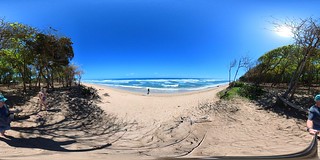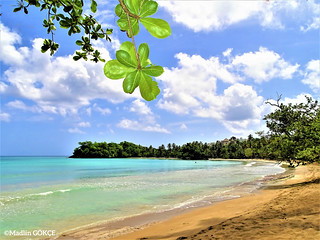Dominican Republic Travel Guide
Dominican Republic Travel & Tourism Information
The Dominican Republic is a Caribbean country that occupies the eastern two-thirds of the island of Hispaniola, which it shares with Haiti. The Dominican Republic is a Hispanophone country and is the second-largest in the Spanish-speaking world after Mexico. The Dominican Republic has the ninth-largest economy in Latin America and is the largest in the Caribbean.
The Dominican Republic is a popular tourist destination for its beaches, resorts, and golf courses. The country also has a rich culture and history, on display in its many museums and landmarks. The Dominican Republic is a diverse country with many cultures, including Spanish, African, and Taíno.
The Dominican Republic is a great place to visit for a beach vacation. The country has miles of coastline and some of the best beaches in the Caribbean. The Dominican Republic is also home to some of the best resorts globally, including the luxurious Casa de Campo Resort.
The Dominican Republic is also a great place to visit for those who love golf. The country has many championship golf courses, including the world-famous Teeth of the Dog course at Casa de Campo Resort.
The Dominican Republic is coconut trees leaning over secluded beaches, the cleanest Caribbean Sea, and excellent diving. The Dominican Republic is a fertile land located in the east of the island of Haiti, surrounded by the waves of the Caribbean Sea. The capital is sultry Santo Domingo, the birthplace of reference cigars and incendiary merengue cradle.
The first association with the Dominican Republic is endless beaches of exceptional beauty: with white sand, spreading palm trees, gentle sea – indispensable attributes of a tropical paradise. But this is by no means the only thing that the country admires travelers. There are many noteworthy sights here: architecture that has absorbed the island traditions and features of European styles, national parks with breathtaking nature. And also – a whole palette of entertainment for adherents of active recreation. The Dominican Republic lives in the rhythms of bachata and salsa, inviting everyone to plunge into the cheerful atmosphere of the world, where every day is like a minor holiday.
Dominican Republic Photos
Videos
Dominican Republic Beaches
Beaches
The Dominican Republic is home to some of the most beautiful and secluded beaches globally. With crystal-clear water and soft white sand, these beaches are a paradise for visitors looking to escape the hustle and bustle of everyday life.
The north coast of the Dominican Republic is known for its stunning beaches, which are often deserted and surrounded by lush vegetation. One of the most popular beaches on the north coast is Playa Dorada, a long, sandy beach located in Puerto Plata. Other famous beaches on the north coast include Cabarete, Sosua, and Monte Cristi.
The south coast of the Dominican Republic is also home to some beautiful beaches, including Boca Chica, Juan Dolio, and La Romana. These beaches are often less crowded than those on the north coast and are perfect for visitors looking for a more secluded beach experience.
No matter where you choose to visit the Dominican Republic, you are sure to find a beautiful beach to relax on and enjoy the stunning Caribbean scenery.
How to get to the Dominican Republic
The Dominican Republic is well connected to the outside world and you’ll find a plethora of flight options from North America and Europe. The primary points of entry into the country by air are Santo Domingo, Puerto Plata, and Punta Cana, with additional international airports at Santiago and Samaná.
When traveling to the Dominican Republic, it’s often cheaper to come via a charter flight. Most of these are a result of the huge all-inclusive tourism industry built up along Dominican shores; package deals for airfare, hotel, and food abound, with astounding rates available to those willing to shop around. But even if you don’t want to go all-inclusive, the air charters that transfer package tourists to their all-inclusive destinations regularly offer extra seats to independent travelers for a surprisingly low price. Those headed here from South Africa will find fewer bargains, but with a bit of stamina, you can make your way to the DR via the major airlines, though you won’t be able to avoid a transfer at some point along the way.
Beach Weather
The climate in the country is humid subtropical. Sea breezes and trade winds blowing from the northeast soften the heat. The rainy season lasts from May to September and is characterized by frequent but short showers. Intermittent showers are also possible in November and December. The rest of the time the weather is dry and warm. The hottest month is August. Average daily temperatures range from +25 ° C in winter to +33 ° C in summer. The ebb and flow are minor.
Cities & Regions
The historic center of the Dominican capital Santo Domingo is included in the UNESCO World Heritage List. Well, deservedly so: the local architecture is luxurious. The city was founded by none other than the younger brother of Christopher Columbus, Bartolomeo, and was baptized at the beginning of New Isabella.
If the capital is ideal for sightseeing holidays, then resorts are for a carefree beach holiday. Punta Cana is the most popular for family tourists with its well-kept coastline, five-star hotels, excellent fish restaurants, and fantastic nature. Nearby there are three national parks with lush vegetation and exotic inhabitants.
Puerto Plata is 120 km of picturesque beaches of the resorts of Cabarete, Sosua, and Playa Dorada. The first is a paradise for windsurfers: the waves are impressive here. Young people come here in search of new acquaintances and adventures. Although it is better to go to Sosua for acquaintances: this small town with a lively beach is full of clubs and bars that beckon thrill-seekers. And Playa Dorada consists entirely of all-inclusive hotels and entertainment points: a golf course, a casino, and excellent shops and restaurants.
Boca Chica is a cozy lagoon protected from the outside world by a coral reef. It is good to combine beach holidays with all kinds of activities: diving or tennis, windsurfing or horse riding, sailing or water skiing. It is better to stay in Juan Dolio for those who often plan to visit the capital: the resort is located just 50 km from Santo Domingo. Bayahibe is famous for its clean beaches, calm sea, and various underwater world. Samana has many secluded corners surrounded by unspoiled nature, and dolphins, manatees, and even humpback whales look into the local waters. A developed tourist infrastructure compensates for the lack of historical monuments in the town of La Romana. And Cap Cana is a young resort but already earned a reputation as an elite: Donald Trump himself had a hand in this.
Culture
The Dominican Republic is a country located in the Caribbean region. It occupies the eastern two-thirds of the island of Hispaniola, which it shares with Haiti. The Dominican Republic is the second-largest country in the Caribbean, after Cuba. The Dominican Republic has over 10 million people, and its capital and largest city are Santo Domingo. The Dominican Republic is a culturally rich country with a diverse history.
The Dominican Republic is known for its music and culture. The country's music mixes African, European, and Indigenous influences. The most popular Dominican music genres include bachata, merengue, and salsa. The Dominican Republic is also known for its traditional folk dances, such as the conga, the merengue, and the bachata.
The Dominican Republic is a popular tourist destination, and its culture is a significant draw for visitors. The country is home to various interesting historical sites, including the first European settlement in the Americas, the fortress of La Fortaleza in Santo Domingo. The Dominican Republic is also home to many beautiful beaches, including Playa Dorada and Punta Cana. The Dominican Republic is a welcoming and hospitable country, and its culture is a significant part of what makes it so unique.
Food
The Dominican Republic is home to a variety of conventional foods, including moro de guandules (rice and pigeon peas), sancocho (a stew made with beef, chicken, pork, and vegetables), and pasteles en Hoja (a type of tamale made with meat, potatoes, and plantains).















